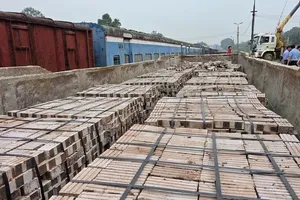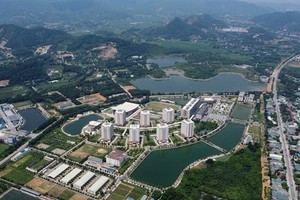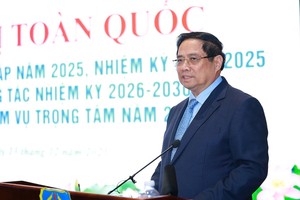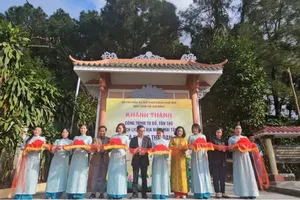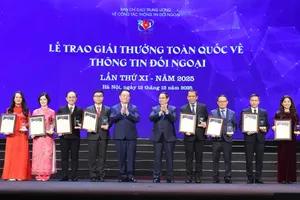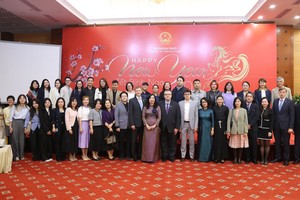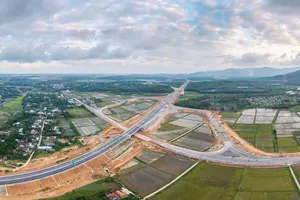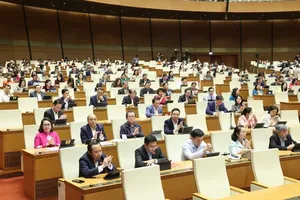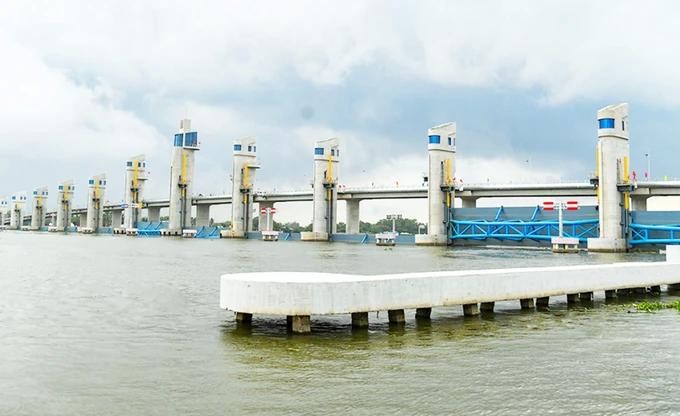
In preparation for responding to questions at the seventh session of the National Assembly, Minister of Natural Resources and Environment Dang Quoc Khanh has sent a report to National Assembly deputies.
In his report about drought, saltwater intrusion, and degradation and pollution of water resources, he wrote that in recent years, due to the impact of climate change and the El Nino phenomenon, drought and water shortages in the South Central and Central Highlands regions have been increasing, with many extreme weather events causing local freshwater shortages and water shortages for agricultural production in many localities.
The impact of climate change combined with upstream exploitation has led to continuous saltwater intrusion in the Mekong Delta region, typically in the dry seasons of 2015-2016, 2019-2020 and early 2024. Saltwater intrusion tends to occur earlier and more strongly than before.
Moreover, the report noticed that in the dry season of 2024, the water level in the Mekong Delta through Tan Chau and Chau Doc on the Tien and Hau rivers as of the end of April 2024 was about 75 billion cubic meters, 8 percent lower than the average for many years. Plus, in May 2024 alone, it was about 11 billion cubic meters, 19 percent lower than the average for many years. Saltwater intrusion reached its highest level in mid-March 2024 and intruded (4g/l) deep into Tien River and Hau River) for about 50-65km.
Following the actual situation, the Ministry of Natural Resources and Environment has developed and submitted to the Prime Minister for approval 10 water resource plans with the goal of ensuring water security, ensuring water resource security in the river basins. Additionally, the Ministry has also proposed specific solutions to prevent and combat drought, saltwater intrusion, water shortage, degradation and pollution.
The Ministry has also developed and submitted to the Prime Minister for promulgation a plan for the national hydrometeorological station network. The Ministry's solutions were submitted to the Prime Minister for consideration and promulgation of an environmental protection plan and a master plan for biodiversity conservation.
In particular, the Ministry pays much attention to monitoring, forecasting and warning in its directives to related departments and agencies which have helped to bring about high efficiency in preventing and combating drought, water shortage and saltwater intrusion.
The Ministry of Natural Resources and Environment has organized the collection of hydrological data from 20 hydrological stations on the mainstream of the Mekong River through the Mekong River Commission and operational data of upstream hydropower reservoirs in China while carrying out measurements at 17 meteorological stations, 75 automatic rain gauges and 51 hydrological stations in the Mekong Delta region to monitor drought and saltwater intrusion at 39 salinity measurement points in 9 provinces and cities including Long An, Tien Giang, Ben Tre, Soc Trang, Kien Giang, Tra Vinh, Ca Mau, Bac Lieu and Ho Chi Minh City.
At the same time, it strengthened monitoring at an additional 12 more points, in conjunction with the specialized salinity measurement station network of localities to continuously update data for management agencies and provide information to the people to proactively prevent natural disasters.
The Ministry issued weekly, monthly and seasonal information bulletins on drought and saltwater intrusion and specialized bulletins on drought, saltwater intrusion, hot weather, and water shortage early and updated continuously to management agencies which will publicize widely so that local inhabitants can proactively prevent and avoid on the website of the National Center for Hydro-Meteorological Forecasting, hydrometeorological stations and social networks, affirmed the head of the Ministry of Natural Resources and Environment.
According to Minister Dang Quoc Khanh, the Ministry of Natural Resources and Environment is urgently developing scenarios for water resources in the inter-provincial river basins which is expected to be announced in early 2025 after the Law on Water Resources takes effect.
Ministries and provincial people's committees in the river basin will study the water resource scenario for regulating the allocation of water resources and formulating a plan for the use of water resources.




